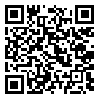Volume 9, Issue 1 (2023)
Pharm Biomed Res 2023, 9(1): 17-26 |
Back to browse issues page
Download citation:
BibTeX | RIS | EndNote | Medlars | ProCite | Reference Manager | RefWorks
Send citation to:



BibTeX | RIS | EndNote | Medlars | ProCite | Reference Manager | RefWorks
Send citation to:
Yahaya T, Obaroh I, Sifau M, Salisu T, Musa M N, Bala Abdulgafar I. Levels and Cytogenotoxicity of Phytochemicals and Heavy Metals in Guava (Psidium guajava L.) Leaves Obtained From Birnin Kebbi, Nigeria. Pharm Biomed Res 2023; 9 (1) :17-26
URL: http://pbr.mazums.ac.ir/article-1-486-en.html
URL: http://pbr.mazums.ac.ir/article-1-486-en.html
Tajudeen Yahaya *1 

 , Israel Obaroh2
, Israel Obaroh2 

 , Mutiu Sifau3
, Mutiu Sifau3 

 , Titilola Salisu4
, Titilola Salisu4 

 , Mohammed N. Musa1
, Mohammed N. Musa1 

 , Ibrahim Bala Abdulgafar1
, Ibrahim Bala Abdulgafar1 




 , Israel Obaroh2
, Israel Obaroh2 

 , Mutiu Sifau3
, Mutiu Sifau3 

 , Titilola Salisu4
, Titilola Salisu4 

 , Mohammed N. Musa1
, Mohammed N. Musa1 

 , Ibrahim Bala Abdulgafar1
, Ibrahim Bala Abdulgafar1 


1- Department of Biological Sciences, Faculty of Science, Federal University Birnin Kebbi, Aliero, Nigeria.
2- Department of Animal and Environmental Biology, Faculty of Life Sciences, Kebbi State University of Science and Technology, Aliero, Nigeria.
3- Department of Cell Biology and Genetics, Faculty of Science, University of Lagos, Akoka, Nigeria.
4- Department of Zoology and Environmental Biology, Faculty of Science, Olabisi Onabanjo University Ago-Iwoye, Ogun State, Nigeria.
2- Department of Animal and Environmental Biology, Faculty of Life Sciences, Kebbi State University of Science and Technology, Aliero, Nigeria.
3- Department of Cell Biology and Genetics, Faculty of Science, University of Lagos, Akoka, Nigeria.
4- Department of Zoology and Environmental Biology, Faculty of Science, Olabisi Onabanjo University Ago-Iwoye, Ogun State, Nigeria.
Abstract: (3456 Views)
Background: Psidium guajava (guava tree) is widely used in Nigeria to treat diseases. However, a paucity of information exists on the safety of the plant.
Objectives: This study determined the safety of P. guajava leaves collected in Birnin Kebbi, Nigeria.
Methods: The methanolic extract of the plant’s leaves was subjected to phytochemical and heavy metal screening using standard protocols, and thereafter, subjected to a cytogenetoxicity test using the Allium cepa toxicity assay. Twenty-one A. cepa bulbs divided equally into seven groups were grown over beakers containing distilled water (negative control), formaldehyde (positive control), as well as 0.25, 0.5, 1, 2, and 4 g of the extract, respectively, for five days. The root-tip cells of the A. cepa bulbs were treated and then examined for chromosomal aberrations.
Results: The phytochemical screening revealed high levels of saponins, and moderate levels of phenols, tannins, and flavonoids, while quinones and terpenoids were sparingly available. The heavy metal analysis showed non-permissible levels of cadmium and zinc, while two other tested heavy metals (lead and copper) were undetected. Except for the A. cepa treated with 0.25 and 0.5 g, the extract induced dose-dependent root growth and mitotic index inhibition (P<0.05). The extract also induced cytogenetic effects, mainly sticky, vagrant, and fragmented chromosomes as well as anaphase bridges.
Conclusions: It can be inferred from the results that low to medium doses of the extract are safe but may elicit harmful effects at high doses. Advice from a phytomedicine or phytotherapy expert should be sought before using it.
Objectives: This study determined the safety of P. guajava leaves collected in Birnin Kebbi, Nigeria.
Methods: The methanolic extract of the plant’s leaves was subjected to phytochemical and heavy metal screening using standard protocols, and thereafter, subjected to a cytogenetoxicity test using the Allium cepa toxicity assay. Twenty-one A. cepa bulbs divided equally into seven groups were grown over beakers containing distilled water (negative control), formaldehyde (positive control), as well as 0.25, 0.5, 1, 2, and 4 g of the extract, respectively, for five days. The root-tip cells of the A. cepa bulbs were treated and then examined for chromosomal aberrations.
Results: The phytochemical screening revealed high levels of saponins, and moderate levels of phenols, tannins, and flavonoids, while quinones and terpenoids were sparingly available. The heavy metal analysis showed non-permissible levels of cadmium and zinc, while two other tested heavy metals (lead and copper) were undetected. Except for the A. cepa treated with 0.25 and 0.5 g, the extract induced dose-dependent root growth and mitotic index inhibition (P<0.05). The extract also induced cytogenetic effects, mainly sticky, vagrant, and fragmented chromosomes as well as anaphase bridges.
Conclusions: It can be inferred from the results that low to medium doses of the extract are safe but may elicit harmful effects at high doses. Advice from a phytomedicine or phytotherapy expert should be sought before using it.
Type of Study: Original Research |
Subject:
Toxicology
| Rights and permissions | |
 |
This work is licensed under a Creative Commons Attribution-NonCommercial 4.0 International License. |







